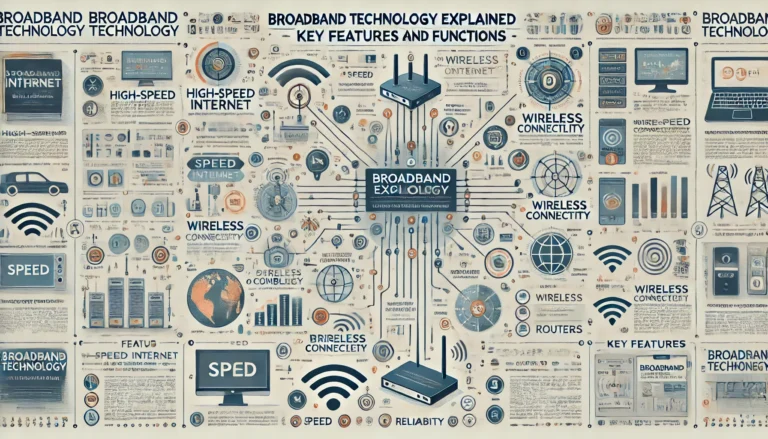Explore Broadband Technologies: Key Innovations
In today’s fast-paced digital world, the need for high-speed, reliable internet connectivity has never been more critical. Broadband technology, which allows for high data rate access on the internet, has been evolving rapidly to meet increasing demands for speed and efficiency in both residential and commercial environments. This blog post delves into the latest innovations in broadband technology, providing a deep dive into how these advancements are shaping our digital future.
What is Broadband?
Before we explore the innovations, let’s define broadband. Broadband refers to a high-speed internet connection that is always on and faster than traditional dial-up access. Various types of broadband connections are available, such as Digital Subscriber Line (DSL), cable modem, Fiber, Wireless, and Satellite. Each type has its distinct way of transmitting data, thereby affecting speed and reliability.
Fiber Optic Technology: A Game Changer
One of the most significant advancements in broadband technology is the adoption of fiber optic cables. Unlike traditional copper wires, fiber optic cables use tiny strands of glass or plastic fibers to transmit data as pulses of light. This technology has dramatically increased internet speeds and reliability, enabling bandwidth-heavy activities like streaming high-definition videos, playing online games with minimal latency, and handling large file transfers effortlessly.
Fiber optics technology also offers a much higher capacity, which means it can handle more simultaneous connections without losing speed. This is particularly beneficial in densely populated urban areas or in situations where multiple devices need to be connected at once.
The Rise of 5G Wireless Technology
While fiber optics mainly caters to fixed broadband services, wireless broadband has also seen significant enhancements with the rollout of 5G technology. 5G stands for the fifth generation of wireless technology, and it promises much faster data speeds, reduced latency, and greater flexibility than its predecessors.

This innovation is not just about speed – it’s also about capacity and connectivity. 5G can support up to a million devices per square kilometer, making it a pivotal technology for the Internet of Things (IoT), smart cities, and industrial automation. With 5G, the way we interact with our smart devices and the internet will be transformed, enabling more integrated and automated environments.
Satellite Internet: Connecting Remote Areas
Satellite broadband technology has also made significant strides, particularly with the advent of low Earth orbit (LEO) satellite systems, like those launched by SpaceX’s Starlink program. Traditional geostationary satellites suffer from high latency due to their distant orbital position, but LEO satellites orbit much closer to Earth, drastically reducing latency and improving speeds.
This technology is a boon for rural and remote areas where laying fiber optic cables or installing cellular towers is not feasible. With improvements in LEO satellite technology, broadband internet is becoming more accessible in hard-to-reach places, ensuring that more people have access to reliable internet services.
Integrating AI and Machine Learning
The integration of artificial intelligence (AI) and machine learning into broadband technologies is another exciting development. AI can optimize network management and performance, enhancing the user experience by predicting and adjusting bandwidth as per usage patterns. This not only improves efficiency but also helps in proactive maintenance of the network, reducing downtimes and service interruptions.
Broadband Technology and Cybersecurity
As broadband technologies evolve, so do the challenges related to cybersecurity. Innovations in cybersecurity measures are as crucial as advancements in connectivity. Enhanced encryption protocols, real-time breach detection systems, and AI-driven security solutions are being developed to ensure that as our internet speeds and capabilities grow, our digital environments remain secure.
Conclusion
The innovations in broadband technology are transforming the digital landscape, enabling faster, more reliable internet access across the globe. From the expansion of fiber optics and the rollout of 5G to the advancements in satellite internet and AI integration, these technologies are not just enhancing user experiences but also empowering businesses and driving economic growth.
Understanding these technologies helps us appreciate how they contribute to the digital infrastructure’s evolution, ensuring we are prepared for the demands of tomorrow. As we continue to innovate, the future of broadband looks not only faster but more intelligent, with seamless connectivity at its core.






